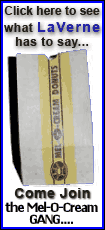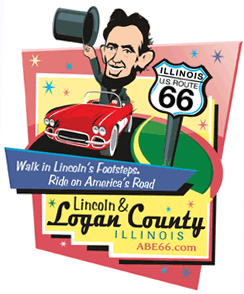 Researchers with the Papers of Abraham Lincoln, a project of the
Abraham Lincoln Presidential Library and Museum in Springfield, have
identified and electronically matched two pieces of a page from
Lincoln's arithmetic copybook, one piece at the University of
Chicago and the other at Brown University in Providence, R.I. Researchers with the Papers of Abraham Lincoln, a project of the
Abraham Lincoln Presidential Library and Museum in Springfield, have
identified and electronically matched two pieces of a page from
Lincoln's arithmetic copybook, one piece at the University of
Chicago and the other at Brown University in Providence, R.I.
"The Papers of Abraham Lincoln is delighted to have been able to
reunite these two fragments from a page of Lincoln's homework as a
teenager," said Daniel W. Stowell, editor of the Papers of Abraham
Lincoln. "Although the two original fragments are in repositories
nearly 1,000 miles apart, the Papers of Abraham Lincoln has reunited
them digitally into a single page."

The oldest existing manuscripts in Abraham Lincoln's own hand are
pages from an arithmetic copybook that Lincoln created in the
mid-1820s while living in Indiana. Lincoln's stepmother, Sarah
Lincoln, gave the copybook to his third law partner, William H.
Herndon, after Lincoln's death in 1865. Herndon subsequently
distributed the pages among friends and acquaintances. Ten pages or
partial pages from the copybook are known to have survived and were
published in facsimile form in "The Collected Works of Abraham
Lincoln" in 1953.
When Stowell and research associate Kelley Clausing scanned
Lincoln-related documents at the University of Chicago's Regenstein
Library in November 2009, they began the process that led to the
reunion of two parts of a page from the copybook. Among the items
they scanned was a fragment of approximately 7 inches wide by 7 1/2
inches tall with math problems on one side and a series of questions
and answers on the reverse. While processing the images at the
Abraham Lincoln Presidential Library later, Stowell discovered that
the fragment fit neatly with a smaller fragment that the project had
scanned at the John Hay Library at Brown University in Providence,
R.I., in 2003. Although the fragment from Brown University had been
published in the "Collected Works," the portion of the page at the
University of Chicago had not. Using the digital images, Stowell
compared the fragments and digitally reunited them into a single
image for the front and another for the back of the page.
"This new discovery revives a part of what was lost to scholars
when William Herndon dissected Lincoln's 'sum book' and portioned it
out in pieces to libraries and collectors as a memento of Lincoln,"
said Holly Snyder, North American History librarian at Brown
University. "We are grateful to the Papers of Abraham Lincoln for
their detective work, which restores the context of Brown
University's own fragment of this earliest known written work by
Abraham Lincoln. It is our hope that this effort will underscore the
benefits of the growing body of digital scholarship on Lincoln."
"The University of Chicago is pleased that its fragment of the
Lincoln sum book has now been reconnected with another surviving
piece from the same manuscript," said Daniel Meyer, associate
director of the Special Collections Research Center at the
University of Chicago Library. "By carefully reviewing the whole
body of Lincoln's writings, the Papers of Abraham Lincoln project is
reconstructing not only the life and career of the 16th president,
but the original documents that form the basis for our understanding
of his significance."
Further research revealed that the questions and answers were
from "The Schoolmaster's Assistant, Being a Compendium of
Arithmetic, Both Practical and Theoretical in Five Parts" by Thomas
Dilworth. The math problems on the back of the sheet were from the
"Examples" section of the same publication. Both the questions and
the problems related to the "Single Rule of Three," a mathematical
method for solving proportions. Dilworth's volume was first
published in London in the 1740s. An American edition appeared in
1769, and additional American editions appeared regularly for the
next 60 years. Which edition Lincoln may have used to create his
copybook remains unknown.
[to top of second column] |

Although the "Schoolmaster's Assistant" provided the answers to
the problems, it did not detail the necessary calculations.
Reflecting the textbook's British origins, the problems referred to
money in pounds, shillings and pence, even in editions published in
the United States in the 1820s. "If 3 oz. of silver cost 17s.," one
problem read, "what will 48 oz. cost?" The answer is £13, 12s. or 13
pounds, 12 shillings.
The reunited images, as well as other images of Lincoln
documents, may be seen at
http://www.papersofabrahamlincoln.org/
New_Documents.htm.
The Papers of Abraham Lincoln is a project of the Illinois
Historic Preservation Agency and the Abraham Lincoln Presidential
Library and Museum. The Center for State Policy and Leadership at
the University of Illinois at Springfield and the Abraham Lincoln
Association serve as the project's co-sponsors. They have completed
"The Papers of Abraham Lincoln: Legal Documents and Cases,"
published in 2008 by the University of Virginia Press; and "The Law
Practice of Abraham Lincoln, Second Edition" published online in
2009, which may be accessed at
www.lawpracticeofabrahamlincoln.org. Researchers and editors are
currently at work on documents relating to Lincoln's Illinois papers
and his presidential papers.

___
Additional links:
The University of Chicago
Brown University
[Text from file received from
the Illinois Historic
Preservation Agency]


 |